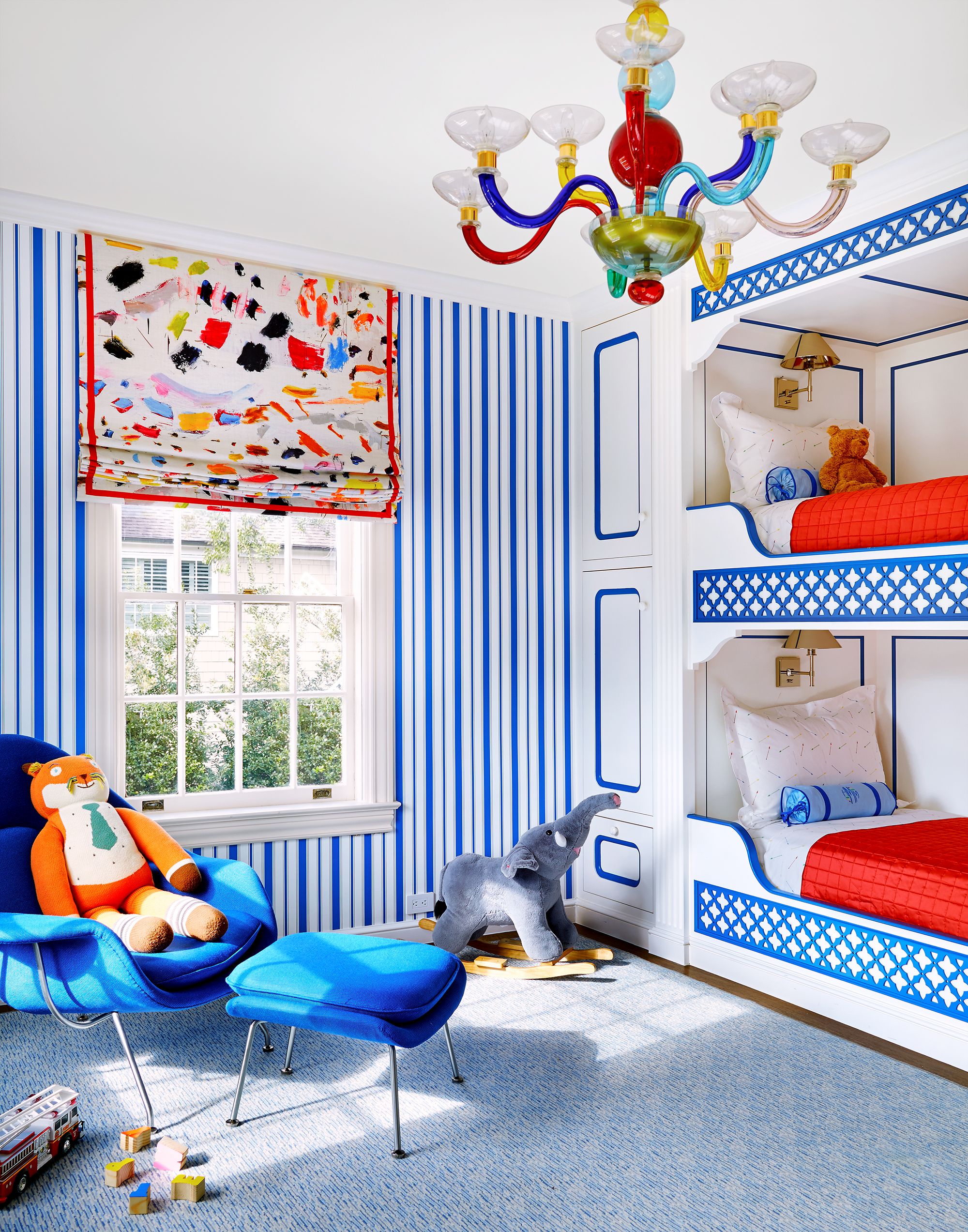Decorating with children's art and designs can be a great way to express your child's unique personality. Using the original work of your child or family can create a gallery wall. If your child's artwork isn't framed, you can turn it into an individual canvases at a local photo printing studio. For a fun look, use small black triangles on the walls, which can be achieved using stencils or wall decals. Floating shelves and floating bookcases featured on childrensspace can double as decor.

To add more style, consider adding storage. While not necessary, storage in a kid's room can keep toys and other items tidy. For example, a bucket with cute labels can be hung from a hook, so the child can grab them for playtime. Then, he can hang it to dry when it's clean. A similar approach is effective for clothing. Alternatively, you can put up a wall-mounted mirror with a fun chevron pattern for a nostalgic look.
Storage in a child's room is essential. Make sure that any storage fits into the room's theme. A few small baskets, with matching labels, can keep the room looking neat and tidy. Another way to incorporate storage is to use buckets or storage units for everyday items. A feature wall inspired by the child's hobby or passion can give the entire space an elegant touch. If your child prefers an old-fashioned feel, try hanging up a dangling laundry bag from a hook above the bed.
To make the space cozy, use cushions or throw blankets on the floor. If the space is large enough, place a canopy bed or fabric canopy above the bed to create a cozy atmosphere. A colorful canopy can also make the room look magical. For more creative ideas, you can create DIY pillows and headboards out of old T-shirts. Decorative accessories like fairy lights and a wicker basket are a great way to express your child's personality and interests.
Incorporate storage in your child's room. While it's essential to keep things organized, they can also be an inspiration. Incorporate storage in a kid's bedroom will help them learn to organize their belongings. While you might not want to put every single item in one container, consider a combination of wooden and plastic boxes and a basket for their toys. You'll also have to choose a theme for the room.
Murals are another great way to add personality to a kid's room. Unlike ordinary wallpaper, murals can be created over time by the child, and can be a great way to encourage creative expression. Whether your child likes cars, animals, or sports, they're sure to love these fun wall murals. It is a great way to express your child's personality and interests through his or her bedroom.
Books are a great way to add personality to a kids' room. Children's books are an excellent source of entertainment. You can display several titles in a book shelf or a picture ledge for extra storage. A picture ledge can double as artwork as well as double as a book shelf. Your child can easily grab a favorite book each night, while a shelf will allow them to keep them out of the way when it's time for bed.
Storage is a key element in a kid's room. The storage should blend in with the theme of the room. Having a place to store toys and other items is a good way to encourage your child to tidy his or her room. Using cute labeled buckets for storage is another great idea. This way, your child can easily grab their favorite bucket and hang it on the wall. It's a great way to encourage children to be neat and tidy.
Another great way to add personality to your kid's room is to create a mural. A mural can be created by incorporating the child's favorite things, their hobbies, and their favorite characters. Chalkboard paint is a great way to allow your child to take part in creating their own wall mural. A kid's bedroom mural can be created with many different pieces of art. They can be painted over as often as they want, and the result will be unique.
